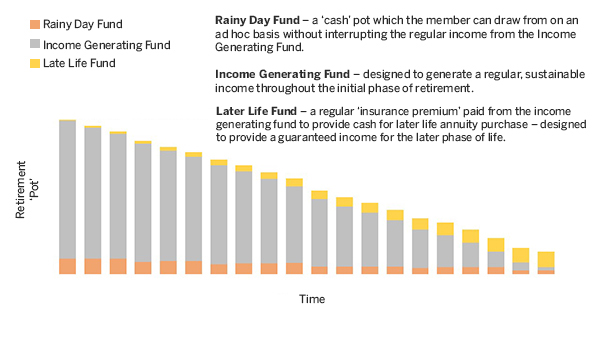From the blog: When discussing retirement pathways, the industry needs to ask itself two key questions: what is the goal of auto-enrolment, and what does success look like?
Currently more than 9m people have been auto-enrolled into a workplace pension. It is clear we have made huge strides in reversing the decline of pension saving for many UK workers – auto-enrolment is rightly seen as a success story.
But is that job done? Can we be confident that auto-enrolled workers are heading for the best possible outcome?
Currently more than 9m people have been auto-enrolled into a workplace pension. It is clear we have made huge strides in reversing the decline of pension saving for many UK workers – auto-enrolment is rightly seen as a success story.
But is that job done? Can we be confident that auto-enrolled workers are heading for the best possible outcome?
At Nest our goal is to help millions of people enjoy a better retirement. And right now we have concerns that the good work achieved by auto-enrolment, in getting more people to save throughout their working lives, could be undone when savers reach retirement because the right support is not in place.
Concerns are mounting
These are not just our concerns. The recent Work and Pensions Committee’s report on pension freedoms and the interim report of the Financial Conduct Authority’s Retirement Outcomes Review have both said that the retirement market does not work for all savers.
Specifically, they note that many savers do not fully understand their options in turning their savings into a sustainable retirement income.
This leaves them at risk from fraud, paying more than they should in charges and taxes, and either running out of money too soon or underspending their pots.
There needs to be a change in how the pensions industry assists our customers.
That is why we support guided pathways. People like exercising freedom and choice with their pensions but many do not know how to manage their money effectively through retirement, and we should not be leaving savers to fend for themselves.
Building a pathway
So what could these pathways look like? One option could be to offer funds that provide a regular, sustainable income with flexibility in the initial phase of retirement, coupled with a guaranteed income solution in later life.
Well governed pathways would help support good outcomes for the many unable to manage the multiple challenges of longevity risk, investment risk and sustainable income levels.

It is here that industry expertise can really make a difference in meeting the broader challenges of freedom and choice.
These pathways would be optional for savers – anyone wanting to take advantage of the full range of control offered by freedoms would remain able to.
But we believe giving all savers access to retirement pathways is the right thing to do and will empower more people to successfully navigate retirement.
Do not leave it too late
Now is the time to act and introduce these pathways. While many of our members currently have small pots, this will not be the case for long.
Rising minimum contributions are boosting pension pots and savers will want to know how their savings increase their retirement income, even if it is a small uplift.
And as for Nest providing guided pathways, our ask is that we retain the same rights as any other provider. We want to be part of the solution that ensures our members will be looked after in retirement.
Mark Rowlands is director of customer engagement at Nest














